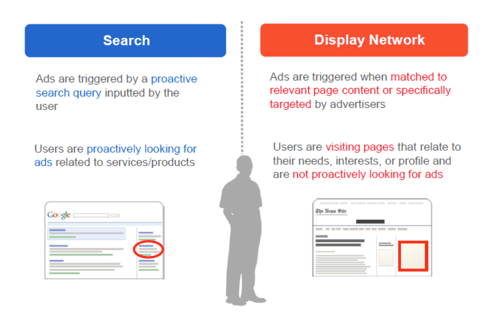
You’ve probably searched for a product using Google Search and immediately saw a high-ranking result with a small label reading “Ad.” It’s there for a reason — someone paid the popular search for it. Taking advantage of these types of ads may be useful for your marketing strategy, but properly implementing them is a little more complicated than you might think.
Last year, Google rebranded its advertising platform from Adwords to Google Ads, as it combined advertising within its Search, Display, YouTube, Google Play and Google Maps products into one division of its advertising suite. Now, this doesn’t affect how you would advertise on the platform, but it does help resolve any confusion about which platform to use if you are thinking about incorporating Google ads in your strategy.
If you aren’t familiar with Google Search and Display advertising specifically, you might be asking the questions, “What do they look like? Where do they appear? How do they work? How much do they cost?”
 How do they work?
How do they work?The Google Search network reaches someone who is looking for a specific good or service. As a business or advertiser, you will need to build a list of industry keywords and phrases relevant to your specific service offerings. The Google Display network reaches millions of websites including YouTube videos, mobile sites and apps. You can choose where you want your ads to appear, whether on specific types of pages or websites that have partnered with Google. You can read more about placements on Google's support site. The format types can be an image, video or rich media format.
The cost of Google Ads varies based on the competition around your specific keywords, industry, location, quality of your advertising campaigns and time of year. This blog can be a helpful guide to get started. Both types of digital advertising use a pay-per-click system (PPC) in which there is a bidding process and an advertiser will determine how much they are willing to pay for someone to click on their ad depending on their goal. Ads are then ranked based on a value called Ad Rank, which is determined by your maximum cost-per-click (CPC) bid and Quality Score (Google’s rating of the quality and relevance of both your keywords and ads). The higher your quality score (1 – 10 scale) and bid amount, the better your ad positioning and likelihood that it will show up in the network you are targeting.
It’s important to keep in mind that the Google Ads space can be extremely competitive based on your industry which will drive up the costs on single keywords, phrases and website targets. If you are strategic about your placements and willing to shift some of your marketing budget to do some A/B testing, you can incorporate this type of advertising to reach potential new leads or customers who are actively looking for the types of products or services you offer. If you’d like to explore options for your digital marketing strategy, reach out to us for a free 30-minute consultation.